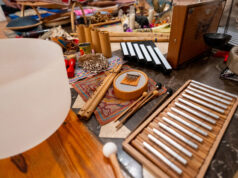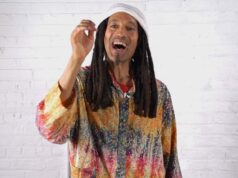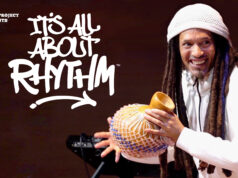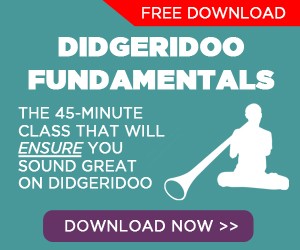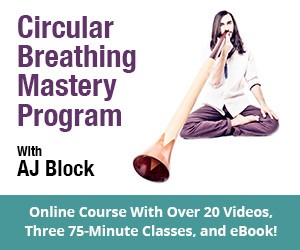If you are trying to learn music then it’s more than likely that you’ve gotten to a place with your practice, at least at some point, or you feel like you’re practicing the same thing over and over without making progress. Well there’s good news: there’s a lot of great practices out there and this article and video will show you some great options that you have to keep your practice interesting while at the same time effectively using your practice time and continuing to push you forward as a musician.
Here are six practice techniques that will help spice things up and get you excited about learning music:
1. Learn music by Practicing the Rudiments
This is an obvious one. Practicing skills such as arpeggios, chords and the very basics of whatever instrument that you’re practicing should go without saying and most to you, if you’re watching this video, probably that’s what you mostly do. However there is always more to study in terms of the basics, you can always find new skills to learn, you can always find new chords to play, you can always find new rhythms to study. You might want to check out the 40 snare drum rudiments which can be applied to any instrument.
2. Learn music by using a play-along app or tool to give your music more context with a drone, drumbeat, and/or chord changes
There are some great apps out there like iTablaPro, iReal Pro and others. With iTabla Pro you can put on a steady drone and improvise and add a drum beat. This app is based on a practice of Indian classical music but it has such a wide application for all musicians. I used to practice didgeridoo with this a lot as well as many vocal exercises. If you are playing a melodic instrument you can use an app like iReal Pro to put on a series of chord changes and you can practice actually making the car changes. iReal basically has preset chords to a lot of jazz standards and you can also purchase more packs of songs. Another great option is to get an app like Drum Beats+, Which gives you a whole range of really good drum beats in many different styles. With all of these apps you can control the tempo and practice faster or slower, depending on what you need. See the video which accompanies this article for demos of all three of these apps.
App links:
iTabla Pro: http://upasani.org/home/itablapro.html
iReal Pro: https://www.irealpro.com/
Drum Beats+: http://ninebuzz.com/drum-beats-metronome-app/
3. Learn music by picking up an instrument that is different from your normal instrument or practice regimen
For example if you are a piano player pick up a rattle or a hand drum. If you are a wind instrumentalist, like a trumpet player, then also you should try a drum. If you’re a drummer than pick up a melodic instrument like a guitar or keyboard or piano or melodica. The main idea here is to learn some of the basics of a different facet of music. Maybe try getting a pair of sticks and learning some snare drum rudiments and just improving your rhythm by exposing yourself to the playing of a different instrument. If you are an instrumentalist try practicing some singing. Then you will diversify your music and get some insight into some other ways to play.
4. Learn music by trying to write a piece of music
If you don’t have much experience writing music then forcing yourself to write something is a great exercise for you. Writing music could start in many ways, including but not limited to starting with chord changes, or starting with a melody or starting with lyrics. Just giving yourself the space to create may result in you actually putting some music together. Honestly there’s so much knowledge out there about how to write a song. If you play guitar, it could be as simple as picking some guitar chord changes and trying to put some lyrics over them. If you play a melodic instrument like a flute, you may start with a melody and then later harmonize it by sitting at the piano. There’s a lot of ways to go about writing music. The main thing is just to give yourself the space to create.
5. Learn music by playing phrases and songs in multiple keys
Taking any simple melody that you know and learning to play it in all 12 keys is one of the best exercises for developing musical fluency on your instrument. This is especially true for chromatic instruments (those that have all 12 tones), however it can also be applied in certain ways to other instruments. Another great thing to learn if you play Aquilo instrument like guitar or piano, is how to play the chord changes to a song in all 12 keys. For example if you learn the cord changes to when the Saints go marching in, which often starts an F, learn to play those same relative chord changes in the key of C or G or D, and so on until you’ve learned it in all 12 keys.
6. Learn music by transcribing or studying a transcription of a musician you like
One of the best practices for developing fluency as a musician is to transcribe music by ear. Listen to a song that you like and try playing the melody on your instrument. Even if it’s like a simple pop song, say a Michael Jackson song like “Man in the Mirror.” Just learn to play that melodic phrase By playing the notes that he sings on your instrument. Just that process of training your ear how to play what you hear is going to give you A lot of tools to be able to better improvise on your instrument. Transcribing by ear is too much, you can also look up transcriptions or guitar tabs of many famous songs and solos. There’s plenty of jazz transcriptions. For example just google Louis Armstrong trumpet transcriptions and you will find all sorts of free sheet music of transcriptions that people have done of his playing. Learning to play the phrase is that the masters have played is one of the best things for helping you build your musical vocabulary.
I hope this has been helpful to guide you towards a more fruitful musical practice. Thanks so much for tuning in and definitely watch the video at the top of this article to see examples of a lot of the techniques discussed here.


